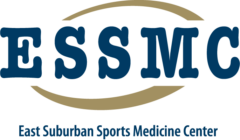Knee Pain
Patellofemoral Pain:
Patellofemoral pain occurs when the patella (kneecap) grinds painfully against the femur (upper leg bone). The mechanism can be attributed to a variety of factors, which your physical therapist will determine through physical examination. These factors can include weakening of the thigh and hip muscles, patellofemoral instability, or abnormal kneecap movement due to body shape or tight muscles. Activities which can worsen patellofemoral pain include excessive stair climbing, kneeling, deep squatting and running.
Typically, your physical therapist will begin to assist in your recovery by teaching flexibility exercises, to stretch tight muscles which are putting abnormal stress and compression through the kneecap. Strengthening, balance, and conditioning exercises are imperative to the long term success of your knee rehabilitation. Your therapist may use any number of modalities, such as heat, and ice, which help to control pain and swelling. Electrical stimulation may also be used to improve muscle contraction or decrease swelling and pain. Sometimes, knee bracing and/or patellar taping are needed to correct the position of your kneecap during exercises. This enables you to be more comfortable while performing exercises, and to avoid irritating the patellofemoral joint. This process may last a month or longer, depending on the severity of your symptoms.
With the help of your physical therapist, you will progress through a series of exercises, which you are encouraged to continue with after the completion of formal therapy. Making this home exercise program part of your daily routine will help prevent future occurrences of patellofemoral pain.
If you have any additional questions with regards to patellofemoral pain, please feel free to call a physical therapist at East Suburban Sports Medicine Center.
Knee of Osteoarthritis:
Osteoarthritis (OA) is the medical term for degeneration of the cartilage (shock absorbers) and weight-bearing joints, as well as irritation of the joint surfaces. Symptoms commonly associated with OA are joint stiffness, pain, swelling, and warmth. The knee is the most affected joint in the body, due to the stresses of athletic, work, and normal daily activities compounded over many years. Previous injury, excessive body weight, and working conditions requiring kneeling/deep knee bending all contribute to developing knee OA.
Medical treatment consists of:
Conservative Treatment: Physical therapy, medication, weight loss, exercise
Surgical: Total Knee Replacement or Debridement
Conservative management begins with decreasing the stresses to the knee until pain subsides, along with use of ice and medication. The physical therapist will help progress you from stretching and range of motion exercises, to strengthening and more functional workouts. The stronger and more flexible the muscle surrounding the knee are, the less stress is put through the knee joint. This helps to relieve the symptoms associated with arthritis.
In more severe cases, when conservative treatment is exhausted, surgery may be the best option. Two types of common surgery for knee OA are arthroscopic debridement (cleaning the rough surfaces of the joint) and total knee replacement (replacing the parts of the knee joint that are arthritic). At ESSMC, are outcomes show that we get patients after knee replacement surgery or debridement back on their feet and returned to their everyday activities quickly.
